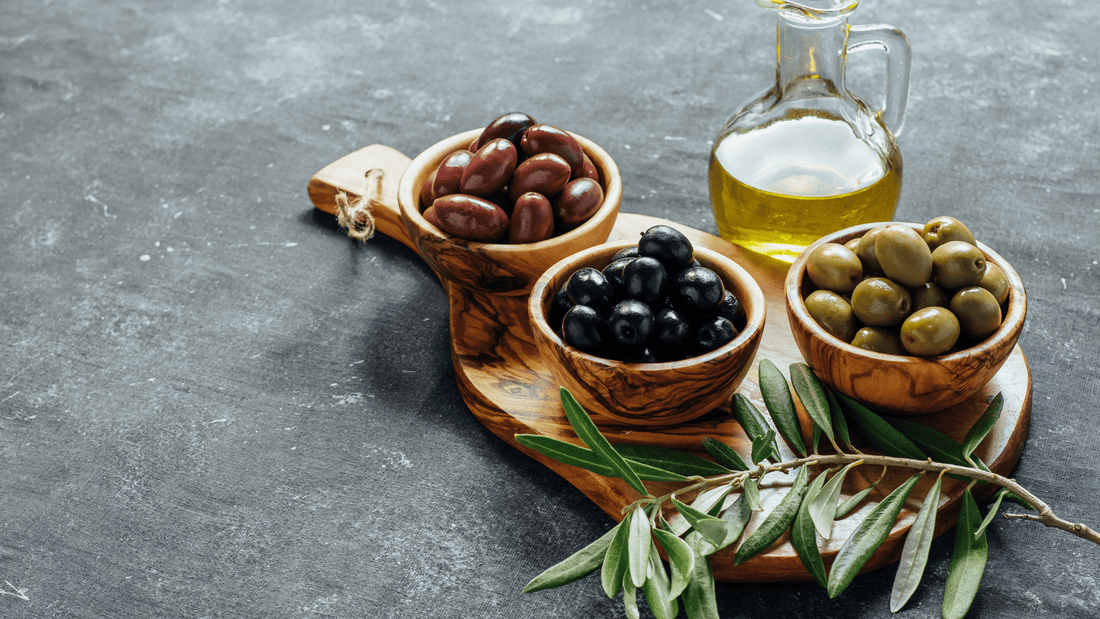According to the International Olive Council there are many different types of olive oil. Yet, not all of these olive oils are good for your health.
In fact, there are some types of olive oils that are not even fit for human consumption. It all depends on the acidity of the olive oil, the method by which it is extracted, and whether the olive oil went through refinement after extraction.
The olive fruit has natural acidity inside it. Usually, the healthier the olive, the less acidity it has. This acidity is also present in olive oil and as a rule of thumb, you should always go for an olive oil with the lowest acidity possible.
Pro Tip: Acidity should always be mentioned on an olive oil label. If you can't find it written anywhere then throw that olive oil away because that brand can't be trusted.
But as already mentioned, acidity isn't the whole story. The 2nd most important factor in olive oil is the method by which the oil is extracted.
Generally, there are two methods for olive oil extraction:
1) First-Press/Mechanical Extraction/Cold-Press: This is when olive oil is extracted without the use of heat or chemicals. Extra Virgin olive oil is always extracted through this method.
However, if the acidity of the first-pressed oil is too high, it will need to go through refinement. This refinement is done through the use of heat and chemicals. Once an olive oil has been refined, it can no longer be called Extra Virgin Olive Oil. Instead, it is called refined olive oil.
A refined olive oil can be of good quality and it has many uses, but it can never match up to the quality of Extra Virgin Olive Oil. This is because the refinement process has an unwanted side-effect of removing some of the healthy nutrients found in Extra Virgin Olive Oil.
2) Extracted with heat and chemicals: This is when heat and chemicals are used to extract the oil. Once extracted, the pomace olive oil has to go through refinement to remove impurities.
Now that we know about the factors that make olive oil different from each other, let's take a look at each type of olive oil one by one:
.png)
Extra Virgin Olive Oil
Any olive oil obtained from cold-press method that has an acidity of less than 0.8%. The important thing to note here is that just being cold-pressed isn't enough. According to the International Olive Council, an Extra Virgin Olive Oil must have an acidity of less than 0.8%, otherwise it is categorized as a Virgin Olive Oil, not an Extra Virgin Olive Oil.
Extra Virgin Olive Oil does not need to go through any sort of refinement or processing. It is the most pure and natural type of olive oil you can buy.
Mueloliva has 2 Extra Virgin Olive Oil varieties:
1) Classica Extra Virgin with max acidity 0.4%
2) Picuda Extra Virgin with max acidity 0.2%. There is no Extra Virgin Olive Oil in Pakistan with less acidity than this.
Virgin Olive Oil
Any olive oil obtained from cold-press method that has an acidity of less than 2%.
The main difference between Virgin Olive Oil and Extra Virgin Olive Oil is the acidity. Extra Virgin Olive Oil has an even lower acidity of less than 0.8%.
Mueloliva does not produce Virgin Olive Oil.
Refined Olive Oil
When a first-pressed olive oil has an acidity that is too high, it needs to be refined to bring the acidity down. This is done through the use of heat and chemicals. After refinement, the refined olive oil must have an acidity of less than 0.3%.
Usually, these refined olive oils have little to no taste and aroma, unlike Extra Virgin Olive Oil.
Refined Olive Oil Blends
This is refined olive oil mixed with Extra Virgin Olive Oil. It must have an acidity of less than 1%.
When olive oil is refined to reduce the acidity, it also loses some of its nutrients that make olive oil good for your health. To restore some of these lost nutrients, premium olive oil brands mix their refined oils with Extra Virgin Olive Oil.
Mueloliva Extra Light Olive Oil is a refined olive oil blended with Classica Extra Virgin Olive Oil.
Pomace Olive Oil
Pomace olive oil is produced from the leftover pulp from Extra Virgin Olive Oil extraction. When no more olive oil can be extracted through the first-press method, heat and chemicals are used to extract the remaining oil from the pulp.
There are 3 different types of pomace oil:
Crude Olive Pomace Oil
Not fit for human consumption without refinement. This type of olive oil is mainly used in making soap and in other industrial uses.
Mueloliva does not produce crude olive pomace oil.
Refined Olive Pomace Oil
Crude olive pomace oil is refined to get rid of impurities. It must have acidity of less than 0.3%. This is the type of pomace oil usually found in stores and is perfectly fit for human consumption.
Mueloliva does not produce refined pomace oil.
Refined Olive Pomace Oil blend
Refined olive pomace oil is mixed with Extra Virgin Olive Oil. It must have an acidity of less than 1%.
Mueloliva pomace olive oil is a refined olive pomace oil blended with Classica Extra Virgin Olive Oil. This is done to restore the nutrients lost in the refining process.

